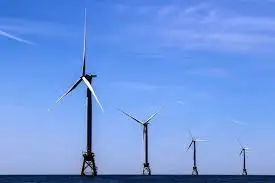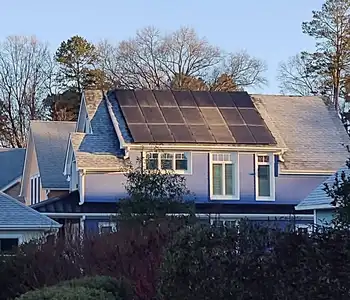Nuclear plant owner says Scriba wonÂ’t need new power lines
"We don't need any new transmission lines," said George Vanderheyden, president and chief executive officer of UniStar Nuclear Energy, which wants to build the plant in Scriba.
New York Regional Interconnect proposes to build a 190-mile, high-voltage power line from Marcy to Orange County. The $2.1 billion line would run through much of Oneida County, the southeastern corner of Madison County and five other counties.
The NYRI plan has drawn opposition from citizens organizations as well as governments along its path. The state Public Service Commission began holding hearings on it.
Nuclear Regulatory Commission Chairman Dale E. Klein suggested last year that more power lines might be needed to serve a fourth nuclear plant. "Obviously it doesn't make sense to license a plant if the licensee can't flow electrons," Klein said during a visit to Oswego County in April.
An NYRI opponent welcomed Vanderheyden's comments.
"If he doesn't think he needs it, that's good news," said Steven DiMeo, the chairman of Communities Against Regional Interconnect, a coalition of NYRI power line opponents.
NYRI spokesman David Kalson said the NYRI line is intended to deal with a larger issue. "Without the line, congestion and inefficiency would continue to mount, leading to brownouts and blackouts, he said. "It's a matter of efficiency."
Vanderheyden was in Central New York to reiterate his company's commitment to building a fourth nuclear plant in Scriba. He spoke to the Oswego Rotary Club and met with The Post-Standard editorial board earlier in the day.
UniStar is moving forward on plans to build four new nuclear plants in the United States, he said. The company is half-owned by Constellation Energy, the owner of Nine Mile Point 1 and 2 nuclear plants, and French nuclear utility EDF.
Nine Mile Point 3, as Vanderheyden called the proposed plant, would be the second of the four UniStar builds. The first would be in Calvert Cliffs, Md., about 40 miles from Washington, D.C. Plants would be built later in Missouri and Pennsylvania.
None of the plants would require new transmission lines, Vanderheyden said. What will be needed, he said, are upgrades to transmission equipment in Scriba.
The new plant would be identical to one under construction in Flamanville, France, Vanderheyden said, producing 1,600 megawatts of power — nearly as much as Nine Mile Point 1 and 2 combined.
The county's third nuclear plant is the James A. FitzPatrick Nuclear Plant near the other two in Scriba.
Vanderheyden put the price of the new plant at around $10 billion, with UniStar and its vendors providing about a third of the funding, the French export bank providing about $2 billion and the rest coming from private funding, much of it backed by federal guarantees.
The Nuclear Regulatory Commission has received license applications for 17 nuclear plants and is expecting another five applications by the end of next year, said Neil Sheehan, an NRC spokesman at the commission's regional office in Pennsylvania.
Vanderheyden said the permit process for each plant will take four or five years and construction takes about the same amount of time. He projected that Calvert Cliffs could be ready to operate in 2016 and Nine Mile Point 3 in 2017.
The Missouri and Pennsylvania plants would go online in the following two years.
Staggering the building of the plants allows a core of skilled nuclear-plant builders to move from plant to plant, he said. He expects that core would number around 1,000, while the work force at a plant during construction could reach 4,000.
The company intends to hire union labor, he said.
Vanderheyden said local support for building in Oswego County is key, along with the necessary infrastructure. At an August meeting in Oswego, support for building the plant was overwhelming.
"I'd like to see a fourth one built, and a fifth one built and a sixth one built. This is a nuclear community," Scriba Supervisor Ken Burdick said in the fall.
"We want to build where we are wanted," Vanderheyden said. "One of the signals is tax breaks."
He said one reason Calvert Cliffs is first in line for a new plant is because the plant there will receive a 50-percent break on its taxes for 15 years.
The new Scriba plant fits into an American energy future that will not look like its past, Vanderheyden said. Wind and solar energy will rise to 10 percent or 20 percent of all energy produced while nuclear power will become the "base load" power, reaching perhaps 40 percent of electricity produced.
Today, nuclear power accounts for less than 20 percent of U.S. electricity. Wind and solar power account for about 2 percent.
Related News

BMW boss says hydrogen, not electric, will be "hippest thing" to drive
LONDON - BMW is hanging in there with hydrogen. That’s what Oliver Zipse, the chairperson of BMW, reiterated during an interview last week in Goodwood, England.
“After the electric car, which has been going on for about 10 years and scaling up rapidly, the next trend will be hydrogen,” he says. “When it’s more scalable, hydrogen will be the hippest thing to drive.”
BMW has dabbled with the idea of using hydrogen for power for years, even though it is obscure and niche compared to the current enthusiasm surrounding vehicles powered by electricity. In 2005, BMW built 100 “Hydrogen 7” vehicles that…





